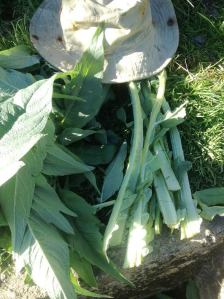Feeding is such an important component of any animal husbandry operation. Not only is it the single most expensive component, but it also effects the health and well being of each individual animal and therefore contributes to the profitability and success of the whole operation. Research has been done over the years indicating exactly what any animal requires in terms of nutrients for what ever system you follow, this information can be applied to the benefit of your farming operation. One fact cannot be argued away – no animal can produce optimally without a balanced diet.
In my own case, I have set up a small blending plant with great success. I do not process any raw materials, as I buy every ingredient in ready to use format, but purely blend it in the right ratio and consistency.
SELECT QUALITY INGREDIENTS
I use an average of about eight dry raw ingredients, depending on the final product, and have sourced regular, suppliers who offer high quality products and are reliable for these. After the initial blending, I add either molasses or oil, both adding mainly energy to the finished product and helps make the product virtually dust free. This method prevents the product from separation and finer ingredients such as limestone, diatomaceous earth and vitamin / mineral premixes from segregating and moving to the bottom of the container. All of this makes it easier and more enjoyable for the animal to consume. Also, each and every mouthful supplies a balanced diet with the required nutrients in place to be healthy and produce optimally.
MEASURING ACCURATELY AND BLENDING DRY INGREDIENTS WELL
I use a large number of two liter plastic containers to accurately weigh each ingredient to make up a batch which is around 1.25 Kg in total. I do this product by product, which eliminates confusion and limits possible errors. In other words, I would weigh in all the wheat, then all the blood meal, etc,etc always ending with the diatomaceous earth and lastly the vitamins and minerals. As soon as I have about twenty buckets each containing all the raw materials, I would blend the contents of each one using a food blender / wisk, blending for about ten seconds.
ADDING GREENS
Even though I do not formulate to have green material into the ration, I always have a surplus in the garden and mix about 50 – 100 grams into each batch, hoping that it may supply some natural ingredients over and above what I have already catered for (I of course do not do this for my free ranging animals). I only take the finer and softer parts of the plants and feed the more fibrous parts to the rabbits. Cardoon has stood me well here in Dunedin as it grows vigorously and even though I eat the best part of the cardoon, it still leaves enough for the rabbits and poultry. If I have other surpluses like cabbage, salads, spinach, etc I would use that instead.
As soon as I have blended the dry ingredients I add the greens and blend everything for another 20 seconds, chopping and mixing the greens well into the dry mix.
ADDING MOLASSES OR OIL
After the greens are mixed into the feed, I ad the molasses or oil and blend for another 10 seconds. The feed is now complete and ready to use
SCREENING
Screening the final mix is very important as a last mixing exercise to ensure there are no large parts that may be inedible. The final feed must be an even bite size and well mixed together in a uniform consistency that would not separate easily.
CAPACITY OF MIXING PLANT
Once you are in operation and all your ingredients and final feed containers are all close and within easy reach, it is very easy to weigh out new batches while, at the same time, mixing the feed of the already weighed ingredients. Mixing cycles are about two minutes and doing 30 Kg per hour is relatively easy. A morning session of four hours delivers 120 Kg plus, depending on how often you break for coffee. This is enough for a reasonable sized operation, like my own, for one week.
The advantage here is that you have a well mixed feed, you know that all the essential ingredients are in the product and the feed is always fresh. By mixing your own feed you are assured that your animals are always well fed enabling them to produce optimally and make money for you.
















